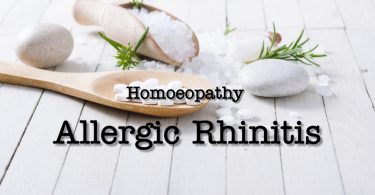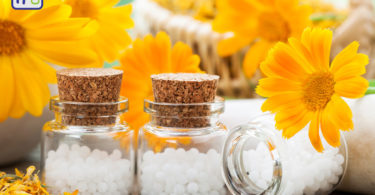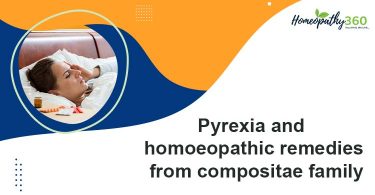ABOUT THE AUTHORS:
- Dr Skandhan. S. Kumar, BHMS MD Organon of Medicine, Assistant professor department of organon of medicine and philosophy, Father Muller Homoeopathic Medical College
- Dr Zainab Imtyaz, BHMS (Intern), Father Muller Homoeopathic Medical College
ABSTRACT:
BACKGROUND: The main aim of this article is to showcase the effectiveness of Homoeopathic remedy Arum triphyllum on Allergic Rhinitis, as we all know that in Homoeopathy totality of symptom is the core of case taking as well as in the treatment of the patient but every disease also has its own totality in it thus this article shows how similar the presentation of Arum triphyllum is with the presentation of Allergic Rhinitis also explains how effective it is in the treatment of Allergic Rhinitis. “the nose itches,” and the other is “he rubs the nose,” which is the hallmark symptom of the disease as well as Remedy1.
KEYWORDS: Homoeopathy, Effectiveness, Totality, Allergic Rhinitis, Arum Triphyllum.
INTRODUCTION:
Arum triphyllum, also known as Jack in the pulpit, is a homeopathic drug prepared from the fresh tuber or corm of the plant Arum triphyllum. Its irritating properties are well marked; excitable and irritable in mind and body. It is especially irritating to the nose and throat.
Allergic Rhinitis is an inflammation of the nasal membranes that is characterized by sneezing, nasal congestion, nasal itching, and rhinorrhoea, in any combination. The core of this remedy is, it is actually an irritant poison causing excitability of mind as well as irritability of body. The most affected areas are Mucous membranes of mouth, throat and larynx2.
Clear description of the disease as per various books, According to CMDT 2019, the essentials of diagnosis of allergic rhinitis are:
- Clear rhinorrhoea
- Sneezing
- Tearing
- Eye irritation – erythema
- Pruritus
Which may or may not be accompanied by –
- Cough
- Bronchospasm
- Eczematous dermatitis
- Environmental allergen exposure in presence of allergen specific Ige3
According to 19th edition of Harrison’s Principles of Internal Medicine, the symptoms of allergic rhinitis is as follows:
- Sneezing
- Rhinorrhoea
- Obstruction of nasal passage
- Conjunctival, nasal pharyngeal itching
- Lachrymation
These are often brought on by exposure to an allergen4.
HOMEOPATHIC ASPECT:
As Kent says “When you see failures you may be sure that they are within yourself. If you think the failure is in homoeopathy, you will begin your corrections on the wrong side of the ledger’’. Same hold good in every Homoeopathic prescription the we match the totality the more accurate the results will be and it all depends on the Knowledge of the Physician and how he uses his Knowledge in applying it to get the similimum5.
The basis of homeopathic prescription is the totality of the symptoms which represent the functional disorder – the abnormal process of the disease itself, not its ultimates or end products
Hahnemann, while conducting drug proving on healthy human beings, noticed peculiar types of individuals who over reacted or reacted to certain things to which majority did not show response. The termed this peculiar state as idiosyncrasy. He wrote “these are peculiar corporeal constitutions which although otherwise healthy, possess a disposition to be bought into a more or less morbid state by certain things which seem to produce no impression and no change in many other individuals.”
SECTOR APPROACH
There are different types of approaches in our system the prime one is the Classical Homeopathy here the Medications are chosen in strict accordance with the Law of Similars. The portrait of each medication is compared with the symptoms of the individual. And then the selection of the correct homeopathic medicine, and achieving the best possible match between the symptom picture of the medication and the symptom picture of the patient. The therapy comprises a detailed case taking considering all physical, mental and emotional symptoms and applies single-constituent homeopathic medicines only. But there is also another type of approach that is the sector approach which is also of great use when there is no clarity with the mental symptoms of the patient.
This approach plays a great role as they have a special affinity to the susceptible organs, and thus has the capacity to correct the disturbance set in. every drug affects some organs/system of organs or tissues or region more decidedly than other organs and there primarily or especially expands it power. This is not a locally acting remedy, but a localisation of the drugs specific nature. This specific localisation or specificity of the seat of the drug is known as elective affinity by which it preferably chooses certain cells, tissues/organs to manifest its action
Knowledge of pathology of the disease is necessary to interpret the symptomatology obtained and prescribe the truly indicated remedy, and note merely one externally homeopathic.
In aphorism 147 Hahnemann says
“Whichever of these medicines that have been investigated as to their power of altering man’s health we find to contain in the symptoms observed from its use the greatest similarity to the totality of the symptoms of a given natural disease, this homeopathic remedy for the disease, in it is found the specific remedy of this case of disease.”6
Dr Hahnemann in his aphorism 117 says that these allergens so actually make this impression on every healthy body us shown by this that employed as remedies they render effectual homoeopathic service. Homeopathic medicine acts dynamically, following law of similar and law of simplex, acting dynamically on vital force. Fundamental cause of every idiosyncrasy in morphological imbalance; that is an organic state in which through excess and defect in development there results excess and defect in function with a corresponding degree of hyper-excitability of non-excitability. Psora is the basis of allergic reactions the intensity of such reactions is due to the release of excessive amounts of histamine could lead to the involvement of sycotic process at work and sycotic factor is present in allergy homeopathic intervention had a modest effect in reducing the amount of medications commonly used to treat allergic diseases and their complications. The study further showed that patients reduced their use of conventional medications by an average of 60% per patient during the 3-month period following the homeopathic intervention7. Several laboratory studies have shown powerful effects of various homeopathic doses on biochemical markers related to respiratory allergies7
TOTALITY OF SYMPTOMS OF ALLERGIC RHINITIS:
- Clear rhinorrhoea
- Sneezing
- Lachrymation
- Pruritis
- Nasal obstruction
ARUM TRIPHYLLUM AND ITS EFFECT ON EOSINOPHILS:
Plants of arum family are beautiful and attractive but, at the same time, they are poisonous. The toxic effects are due to calcium oxalate crystals. The toxicity ranges from minor oral cavity oedema to lethal airway obstruction8.
CLINICAL PRESENTATION:
Toxicity may occur as a result of skin or eye contact, inhalation, or ingestion. Inhalation may cause sore throat, cough, and wheezing. Large exposures may lead to chemical pneumonitis or pulmonary edema.9 There are 215 families of plants that contain insoluble needle-shaped calcium oxalate crystals on the surface of their tissues. Upon mucosal contact, injury can cause extreme pain, soft-tissue swelling, salivation, dysphagia, and even aphonia. This presentation can resemble angioedema or anaphylaxis.10 clinical and experimental experiences have shown that the eosinophils are predominantly engaged in allergic condition11 thus it suggests that Arum triphyllum has definitive action on blood eosinophils.
HERINGS GUIDING SYMPTOMS:
SIGHT AND EYES
- Aversion to light
- Upper eyelids heavy, with headache
- Eyes feel as after shedding many tears
- Eyes heavy, sleepy
- Smarting of eyes
- Tension in lower eyelids as if swollen
- Quivering of left upper lid
- Water in eyes all day, most at outer canthi, edges of lids swollen
- Catarrh of lachrymal sac, with desire to bore into side of nose
- Stitches over left eye
- On turning eyes upward, shooting in occiput, mornings
SMELL AND NOSE
- Sneezing worse at night
- Nose moist, but obstructed
- Discharge in morning streaked with blood, during day yellow thick mucus
- Fluent coryza, acrid
- Corrosive yellow nasal discharge, nostrils raw
- Diphtheria
- Scarlatina
- Drink passes up through nose
- Nose feels stopped up in spite of watery discharge
- He can only breathe through mouth open
- Nose stopped up with or without profuse yellow discharge
- Nostrils sore, worse left, nose, lips and face chapped, as from a cold wind
- Constant picking of nose until it bleeds
- Desire to bore into side of nose
- Catarrh of lachrymal sac
- Much sneezing at night with constriction of throat.
- Great heat in face and head in afternoons, with fluent coryza
- Discharge tough, yellowish, with swelling of soft palate and pressure
UPPER FACE
- Face swollen and red
- Heat in face, in afternoons with coryza
- Swollen, bloated face12
CLARKES DICTIONARY OF PRACTICAL MATERIA MEDICA:
CHARACTERISTICS:
- Especially irritable to nose and throat
NOSE
- Sore
- Nose stopped
- Dry coryza
EYES
- Catarrh of lachrymal sac13
TF ALLEN – HANDBOOK OF MATERIA MEDICA:
EYES
- Much water in eyes especially outer canthus & swelling of margins of lids
NOSE
- Obstruction – must breathe through mouth
- Sneezing, much better in afternoon with feeling as if he has taken cold
- Coryza, fluent, profuse
CLINICAL
- In hay fever, with terrific pain over root of nose14
KENTS LECTURES
- It has also been found useful in catarrhal affections of nose, eyes and lids.
- It has the most dreadful coryza. The nose is stopped up and more stopped up at the left side.
- Must breathe through mouth
- Sneezing worse during the night, fluent acrid coryza
- The fluid from the nose as it flows over the skin leaves red stains
Since the totality of symptoms of allergic rhinitis matches that of arum triphyllum, arum triphyllum can be employed in a potentised form for the treatment of allergic rhinitis homeopathically15.
CONCLUSION:
Here we can clearly get an idea that how the totality of the Homoeopathic remedy Arum Triphyllum is similar to the symptomatic presentation of Allergic Rhinitis thus whenever the totality matches and we are unable to confirm the mental symptoms of an individual it’s better to start the treatment approach with sector totality concept and when the totality is accurately constructed and if the medicine is indicated it shall definitely improve the quality of life of the patient. This article will be like a precursor for a research which can be conducted on the effectiveness of Arum Triphyllum on reducing the eosinophil count of an individual suffering from allergic rhinitis thus prove its effectiveness with scientific background.
BIBLIOGRAPHY:
- Boericke’ s New Manual of Homoeopathic Materia Medica With Repertory. New Delhi: B. Jain Publishers. Page 55
- https://homeopathybooks.in/concise-materia-medica-by-s-r-phatak/arum-triphyllum-19/ cited on 11-11-20
- Hill McGraw Current Medical Diagnosis & Treatment 2019, Fifty-Eighth Edition 2019 Lange Medical Publications. Page226
- Kasper DL, Fauci AS, Hauser S, et al, editors. Harrison’s principles of internal medicine, 19th ed. Lange Medical Publications page 239
- http://www.homeoint.org/morrell/articles/pm_kents.htm cited on 12-11-2020
- Hahnemann, S. (1849). Organon of medicine. London: Headland. Chicago page 246
- Frenkel, M., & Hermoni, D. (2002). Effects of homeopathic intervention on medication consumption in atopic and allergic disorders. Alternative Therapies in Health and Medicine, 8(1), 76-9.) page 55,57,247
- Jadhav DR, Gugloth R. Poisoning due to Arisaema triphyllum Ingestion. Indian J Crit Care Med 2019;23(5):242–243.
- https://accessmedicine.mhmedical.com/content.aspx?bookid=391§ionid=42069935 cited on 14-11-2020
- Ceretto V, Nacca N. Mucosal Injury from Calcium Oxalate Crystals Resembling Anaphylaxis and Angioedema. J Emerg Med. 2018 Nov;55(5):666-669. doi: 10.1016/j.jemermed.2018.07.016. Epub 2018 Sep 24. PMID: 30262249.)
- https://onlinelibrary.wiley.com/doi/abs/10.1111/j.1398-9995.1955.tb03589.x cited on 15-11-2020
- Hering, C., 2013. Arum Triphyllum – Guiding Symptoms of Our Materia Medica – Hpathy.Com. Accessed 15-11-2020.
- Clarke, J., 1996. A Dictionary of Practical Materia Medica In Three Volumes (Volume III). Delhi, India: B. Jain Publisheres.
- Allen, H., 1978. Keynotes and Characteristics with Comparisons of Some of The Leading Remedies Of The Materia Medica. Wellingborough, Eng.: Thorsons Publishers.
- Kent, J., 1985. Lectures on Homœopathic Materia Medica. New Delhi: Jain Pub. Page 315





